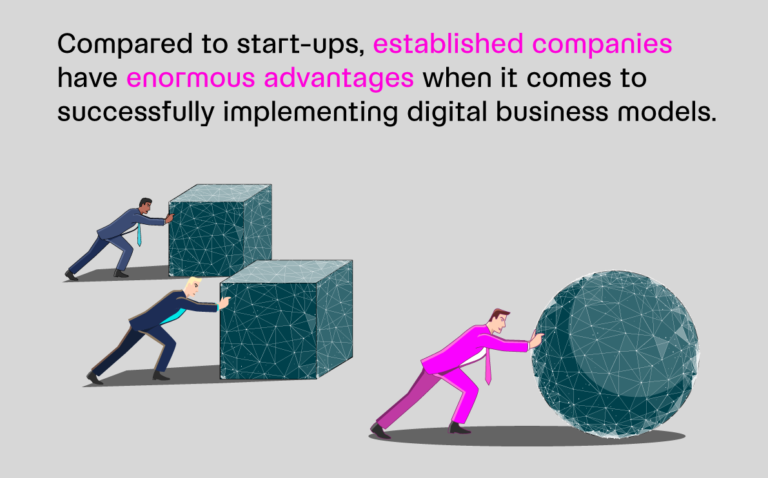Philipp Noack – Co-founder of Venture Leap. Philipp has been working in the startup industry since 2008 and has seen both sides of the table from Venture Capital to Founder and Executive in numerous projects. Here he shares some of his experiences.
So, you want to change the world with your idea? Great, then tell me what are the three most important prerequisites to be true in order for your idea to be successful in the real world?
This is the point in a conversation where a lot of people with great ideas become very quiet all of a sudden. They haven’t even thought about it.
If you do not have the right business model, your digital product will fail. The reason so many products and businesses fail is that they do not spend enough time testing their assumptions around their business models before trying to build an MVP.
However, testing your idea is not scary. At Venture Leap we use different Design Thinking tools and processes to help our clients along the way. Here is a quick overview of what you can do at home to test your business model.

How do I know what to test?
Many entrepreneurs are unsure where to begin. What should you be testing? Here at Venture Leap, among others, we are a big fan of Strategyzer and the tools they provide to get a clearer picture of a new business idea. You can download the templates here.
The first step to test your business model is to create a business model canvas. Print it out and put it on the wall – the bigger the better. On the canvas, you quickly create a visual map of your business model. The tool is intuitive and doesn’t require any advanced knowledge, but a lot of post-its and markers. This can be done quick – try to get a first draft in under 60 minutes.
Once you have a visual representation of your business idea, you create a value proposition canvas. Here you get specific about what value your digital product delivers and who you are delivering that value to. Again, print it out and have some fun.
Spending the time to visually create models of your business idea and your value proposition gives you a different perspective on your business. It’s easier to see places where you need to spend more time refining your ideas. It is also useful for seeing disconnects between the value you want to deliver and what your product actually does.

Generate three hypotheses
Pin your business model and value proposition canvas to the wall in order to have a good overview. Now it’s time to start the testing process. When you test your business model, you need to formulate a series of hypotheses around the results of your business model canvas and your value proposition canvas.
A hypothesis is not the same as a business assumption. With an assumption, you are accepting a level of risk and moving forward. With a hypothesis, you intend to test it to see if it holds up.
Hence you need to get specific here, e.g. “We believe our ideal customer has problem x at least 3 times a day.”
For your first iteration you need to identify and focus on the top three hypotheses that absolutely must be true for your idea to be successful. Get out the post-its again and start formulating some 10-15 hypotheses and rank them according to importance.
Once you have identified the top three hypotheses, you need to conduct meaningful tests.
Test your top hypothesis
Scientists work to falsify a hypothesis. In other words, they vigorously try and prove that something doesn’t work.
You need to bring that same rigor to your business hypotheses.
Fortunately for you, the internet is the perfect laboratory for testing business model and ideas around a digital product. Two examples for easy, low-cost ways to test your hypotheses are to build landing pages and to conduct client interviews.
For you to get the best results, each experiment should only focus on a single hypothesis at a time. If you try and test all three hypotheses with the same experiment, your data will be muddled.
During the testing phase, you need to be vigilant not to let your confirmation bias taint the results. You need to be working to break your product. If you are not open to your hypotheses being false, there is no point in conducting any tests.
If you invest the time in testing your business model before launching your product, you will be far ahead of your competitors. You will have a much clearer view on what needs to be developed for your MVP to be of value to your customers. Most importantly, you will also be profitable much sooner.
If this still sounds scary to you, don’t despair. We go through these processes on a regular basis – so if you need help, book a call with us and we can talk you through the process and give you some tipps.
If you want to know what differentiates us, have a closer look at our approach of the Product Studio Model.




